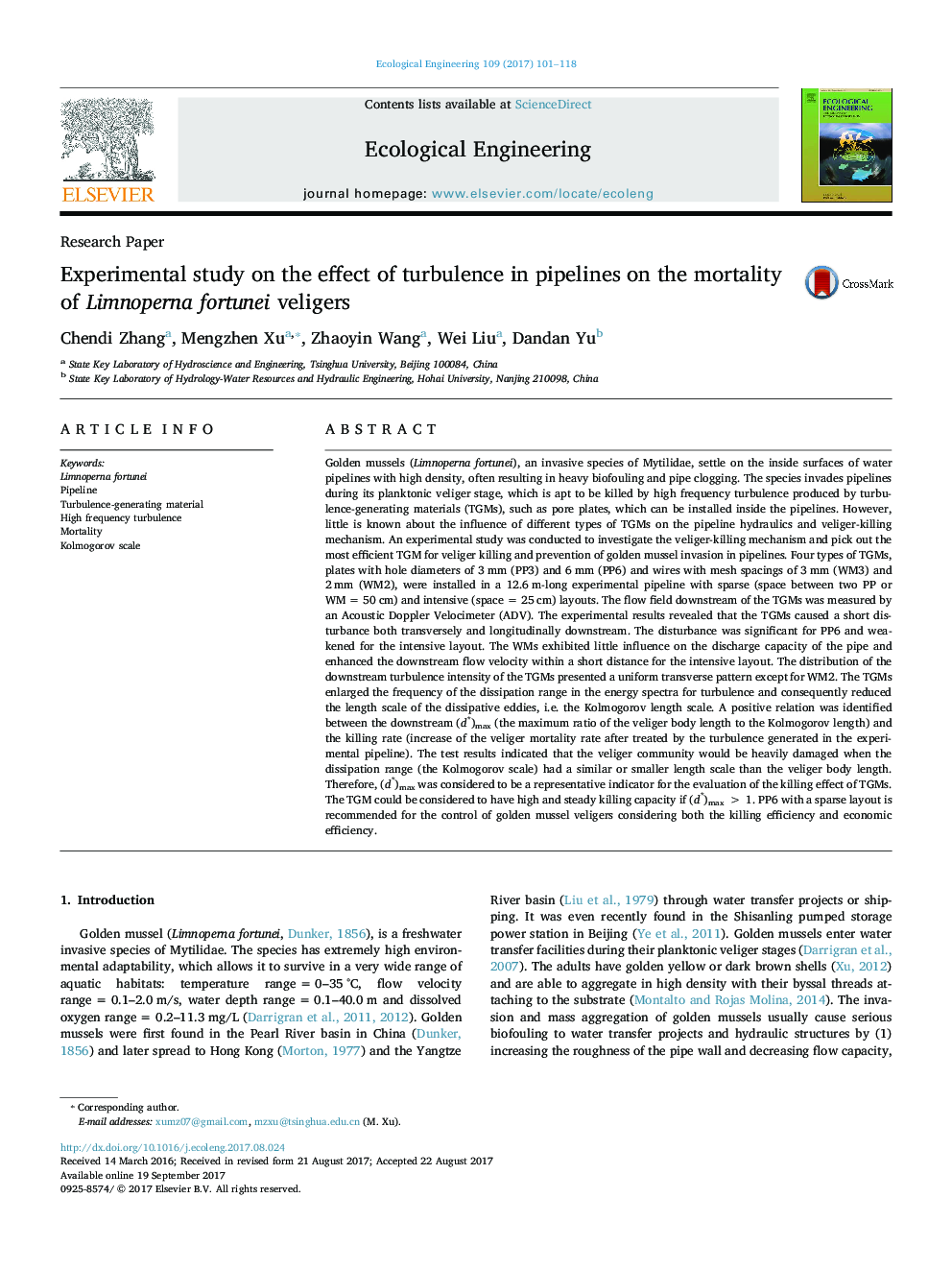| کد مقاله | کد نشریه | سال انتشار | مقاله انگلیسی | نسخه تمام متن |
|---|---|---|---|---|
| 5743649 | 1412317 | 2017 | 18 صفحه PDF | دانلود رایگان |
- Four types of turbulence-generation-materials (TGMs) were tested in the pipeline.
- Hydraulic characteristics were studied using ADV in the downstream of the TGMs.
- The length scale of the dissipative eddies decreased due to TGM installation.
- A positive relationship was identified between the (d*)max and the killing rate.
- (d*)max > 1 was set as the criterion for high and steady killing capacity of TGM.
Golden mussels (Limnoperna fortunei), an invasive species of Mytilidae, settle on the inside surfaces of water pipelines with high density, often resulting in heavy biofouling and pipe clogging. The species invades pipelines during its planktonic veliger stage, which is apt to be killed by high frequency turbulence produced by turbulence-generating materials (TGMs), such as pore plates, which can be installed inside the pipelines. However, little is known about the influence of different types of TGMs on the pipeline hydraulics and veliger-killing mechanism. An experimental study was conducted to investigate the veliger-killing mechanism and pick out the most efficient TGM for veliger killing and prevention of golden mussel invasion in pipelines. Four types of TGMs, plates with hole diameters of 3 mm (PP3) and 6 mm (PP6) and wires with mesh spacings of 3 mm (WM3) and 2 mm (WM2), were installed in a 12.6 m-long experimental pipeline with sparse (space between two PP or WM = 50 cm) and intensive (space = 25 cm) layouts. The flow field downstream of the TGMs was measured by an Acoustic Doppler Velocimeter (ADV). The experimental results revealed that the TGMs caused a short disturbance both transversely and longitudinally downstream. The disturbance was significant for PP6 and weakened for the intensive layout. The WMs exhibited little influence on the discharge capacity of the pipe and enhanced the downstream flow velocity within a short distance for the intensive layout. The distribution of the downstream turbulence intensity of the TGMs presented a uniform transverse pattern except for WM2. The TGMs enlarged the frequency of the dissipation range in the energy spectra for turbulence and consequently reduced the length scale of the dissipative eddies, i.e. the Kolmogorov length scale. A positive relation was identified between the downstream (d*)max (the maximum ratio of the veliger body length to the Kolmogorov length) and the killing rate (increase of the veliger mortality rate after treated by the turbulence generated in the experimental pipeline). The test results indicated that the veliger community would be heavily damaged when the dissipation range (the Kolmogorov scale) had a similar or smaller length scale than the veliger body length. Therefore, (d*)max was considered to be a representative indicator for the evaluation of the killing effect of TGMs. The TGM could be considered to have high and steady killing capacity if (d*)max > 1. PP6 with a sparse layout is recommended for the control of golden mussel veligers considering both the killing efficiency and economic efficiency.
Journal: Ecological Engineering - Volume 109, Part A, December 2017, Pages 101-118
